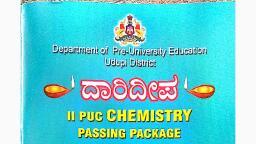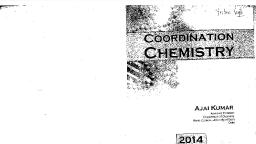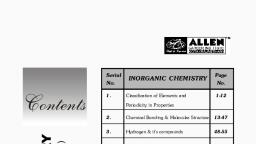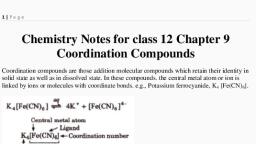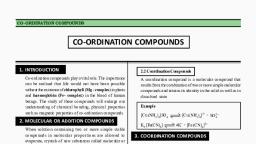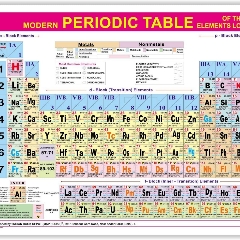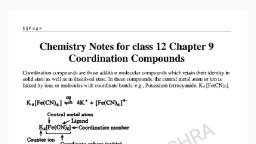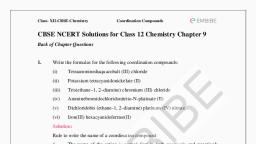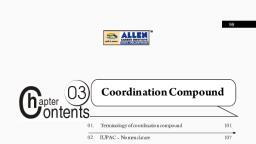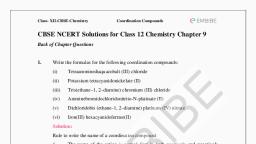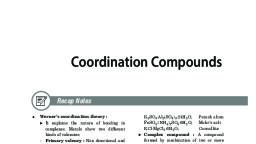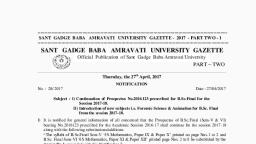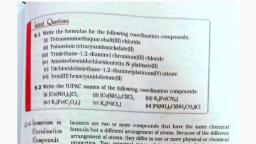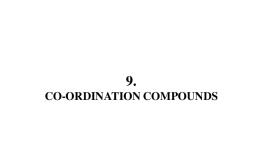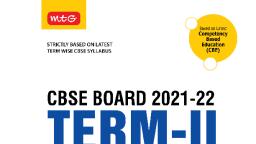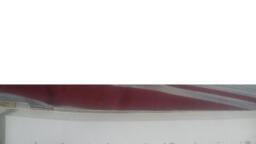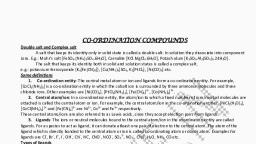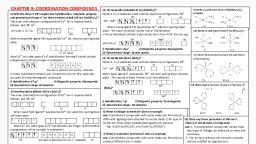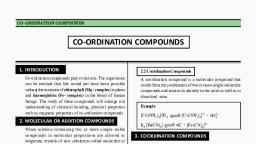Page 1 :
AJAI KUMAR, , Assistant Professor, Department of Chemistry, , Hindu College, University of Delhi, Delhi, , , , , , , , , , AAARYUSH., B-3/2, Ground Fl
Page 3 : pounds relevant to students of undergt, ‘ofall Indian universities. have written this, , , , , I feel pleasure to introduce this book; The content given in the book, Concept of coordination’ ‘, , , , , , , , , will be invaluable to teaching and“t, chemistry. I also feel pleasure that this book: is written by my. colleague. We, (myself, Ajai Kumar and Meenu Srivastava) normially share and discuss the, fundamentals “of inorganic chemistry ‘including coordination chemistry ° Be, , , , , , , , , , , , , , , , , , , , , , , , both as. complex ions); bonding ‘th oar ary, four and electronic spectra, stability and reaction mechanism. I'felt that, the-stidents face the various problems regarding the fundamentals of, ation chemistry. Therefore, I had decided to. write the ‘book on, fundamentals of coordination chemistry., “Tope that this book will be very helpful for the aspirants of all, competitive exams related to chemistry: like IfT-JAM, CSIR-UGC, " (NETARF), GATE, TIFR, BARC, IISc, DRDO, ONGC, NTPCete., , Ihave incorporated large number of objective questions asked in the », “past competitive exams to know the Jevel of question paper for future, = competitive examinations. The category “Fill in the blanks” are especially, , when we are in laboratory, staffroom or the teacher’ S room. 1, The question, fill in the blanks, objective and subjective have the. X, “= ° ~ Jevels of various competition ex M, CSIR: UGC (REINET),, ‘GATE, USe, BARC, TIFR, DRDO; ONGC, NTPC, NBRE ete. The, ‘fundamentals’ ‘of coordination chemistry. aré iwritten: aveotding to the need, ofthe students. I wish that this book may give a way of: sure success., , , , , , Dr.RamSharan, i se incorporated for the aspirants of I{T-JAM examination. 2, Associate Professor . =, - : Ihave taken particular care to ensure that the text is free of erros., Deptt.ofChemistry-. = fe wise, . sa Ithank to Mr. Prakash Arora for designing and giving a good look to the, Hindu College, = -book. I thanks to Mr, Anil Goriyan whose efforts made the completion of, University of Dethi -thisbook., Delhi © Lexpress my sincere thanks to my daughter-Little, my son-Aaryush, , and my wife-Mrs. Archana and my other family members., , also thank to Dr. Meenu Srivastava, Dr. Sudarshan and Dr. Raghvi, ‘Khattar fortheir constructive suggestions., ©: ‘Ifa learner found any error in the text, please send your constructive, ‘criticism and suggestions to update the book time totime. The criticism will, . begratefully received and acknowledge. £, , , ,
[email protected]
Page 4 :
_ CONTENT, , : cated, An Introduction to Coordation Compounds :, Structure and Isomerism in Coordination Compounds, TUPAC Nomenciature of Coordination cotnpouivds, Theories for Metal-Ligand Bonding in Complexes, Colour and Electronic Spectra, , Magnetism, , Stability of Complexes and Reaction Mechanism, , Coordination Chemistry, , Page No., 1.1-1.24, 2.1-2.44, 3.1-3.18, 4.1-4.60, S.1-5.66, , 6.1-6.18
Page 5 :
OVD lk 5] deuvle . aadk &, , . (ep avalon on, , © dots diss ous, , , , , , , Noy quibrcluilate. ], NO” Nob amg loiduiate isa, , tN” dovrt Selaile as oubhdent, , , , Any species (ion or molecule) that have atleast one lone pair of electrons and that can donate its lone, pair of electrons to a metal cation or atom is called a ligand. Since a ligand is an electron rich species,, therefore, it is also called a Lewi: Ora nucleophile. A metal cation is an electron deficient species, and it can accept a pair of electrons, therefore, a metal cation behaves as a Lewis acid or an electrophile., When a group of ligands donates its pairs of electrons (one pair by one donor atom of a ligand) to the, metal cation or atom coordinate bonds are formed ard the product so formed is called a coordination, compound. Thus, a compound in which a metal cation or atom is attached to a group of ligands by, coordinate bonds is called a coordination compound or complex compound. The coordination, , 2, compounds may either be neutral molecules or ionic compounds. The compounds like [Pt(NH3 )»Cl. ],, , 3, [Co(NH3 )3 Cl3 Jare neutral coordination compounds. In ionic coordination compounds either the cation, or anion or both may be complex ions. For example, [Co(NH3)6]Cl3 contains (Co(NH3)¢ ]°* -as, complex cation, Ky [Fe(CN)¢] contains [Fe(CN)¢]*" as complex anion and (Pt (NH3 4 [PtCl4], contains (PUNE) 4]?* and [PtClaP- as complex ions i.e, complex cation and complex anion, respectively. The coordination compourids retain their identity, more or less even in solution, though, partial dissociation may ocr These compounds a not ge the tests of ali their Constituent ions in, aqueous Solution re some Constituent i itities i jution{ For, example, {Co(NH3 )¢ Cl; is a complex compound and it does not give the test of all the constituent ions,, Co3* and Cl” instead it gives theCo™” as [Co(NH3 )¢]** complex ion and Cl” ions., , A complex ion is an ion in which a metal cation is attached to ligands by coordinate bonds., Coordination chemistry is the branch of i inorganic chemistry which concerns the study of, coordination compounds., , In the structural formula of a coordination compound, the central metal cation or atom and the, ligands attached to it are written in a square bracket, [ ] which is called a coordination sphere. The cation, , or anion out side the courineson suite is called the ionization sphere or counter ion., The atom in a ligand that is directly attached to the metal cation or atom is called the donor atom and, , the number of donor atoms attached to metal cation or atom is called the coordination number. For, example, coordination number of Ag* in Ag (NH )2]°* is 2, that of Cu2* in{Cu(NHg }4]7* is 4 and, that of Co** in {Co(NH3)6]** is 6., , , , we, ¥* ‘x

